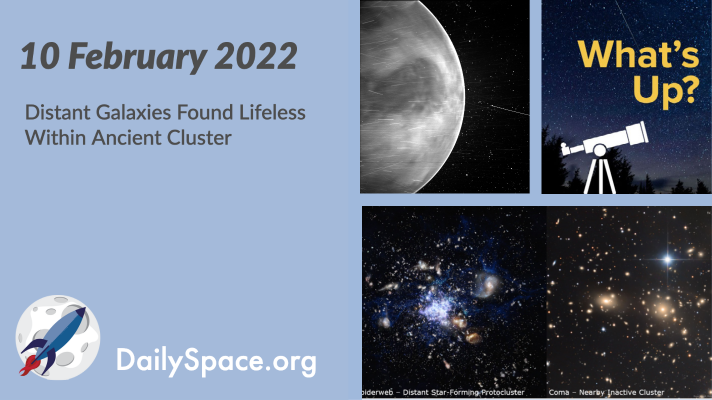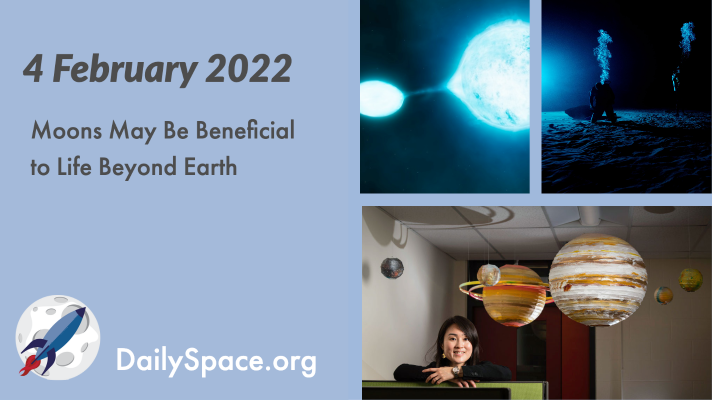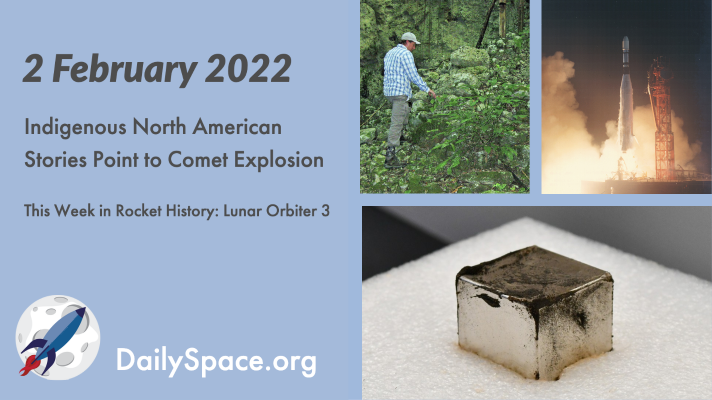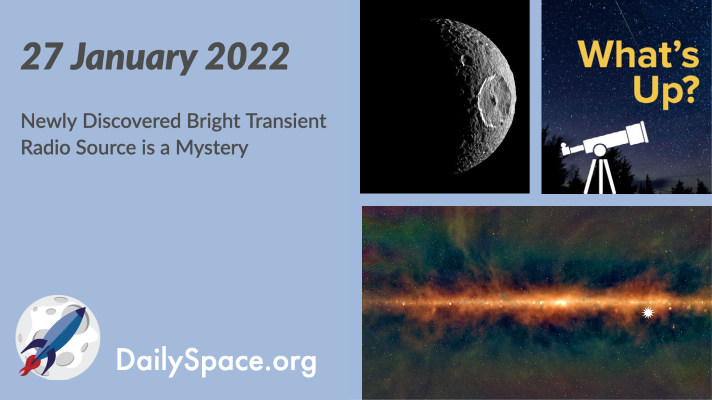
Feb 14, 2022 | Asteroids, Book Club, Daily Space, Exoplanets, JWST, Review, Rockets, Soyuz, Spacecraft, SpaceX, White Dwarfs
The second stage of a Falcon 9 rocket launched in 2017 re-entered the atmosphere over Mexico, breaking up and creating a show of fiery lights in the sky. Plus, dead stars with possibly living planets, more on moon formation, more launches, more launch failures, and a review of “The Apollo Murders” by Chris Hadfield.

Feb 11, 2022 | Daily Space, Exoplanets, Galaxies, Sky Watching, Spacecraft, Venus, White Dwarfs
Defying expectations, an ultramassive galaxy and many of its cluster companions had already formed most of their stars and become inactive only two billion years after the beginning of the universe. Plus, the nightside of Venus, a new exoplanet for Proxima Centauri, and What’s Up.

Feb 5, 2022 | Astrobiology, Crewed Space, Daily Space, Exoplanets, Moon, Rockets, Sky Watching, Spacecraft, SpaceX, Starlink, Stars, Supermassive Black Holes, Uranus
New simulations find that to form a moon with a similar size ratio to our own system, certain types of planets are needed. And that type of moon-planet system could then be beneficial to the rise of life on the planet. Plus, a Starlink launch, puffy planets, and training astronauts underwater for spacewalks.

Feb 3, 2022 | Asteroids, Comets, Daily Space, Earth, Exoplanets, Moon, Random Space Fact, Rockets, Space History, Spacecraft, White Dwarfs
By collecting and analyzing stories from a variety of indigenous cultures in North America, researchers find evidence for a mid-air explosion of a comet or asteroid, similar to the Tunguska event. Plus, a new Trojan for Earth, volcanoes and dinosaurs, ancient Mexican cacao groves, and this week in rocket history is Lunar Orbiter 3.

Jan 28, 2022 | Daily Space, Earth, Mars, Neutron Stars / Pulsars, Observatories, Our Solar System, Saturn, Science, Sky Watching, The Sun
Scientists using the Murchison Widefield Array in Australia recently discovered an extremely bright source of radio waves, releasing bursts of energy three times an hour. That timing makes the object behave unlike anything else seen to date, leaving the research team with a new mystery to unravel. Plus, everything else is about water today, all over the solar system, and we present this week’s What’s Up segment.

Jan 26, 2022 | Brown Dwarf, Daily Space, Earth, Exoplanets, Guest Interview, JWST, Mars, Opportunity, Rockets, Spacecraft, SpaceX
A dynamical analysis of the 14 Herculis system has revealed the existence of two brown dwarf planets orbiting in completely misaligned, eccentric orbits. Plus, weird ice in Chicago, the ongoing debate about liquid water on Mars, one rocket goes up while a capsule comes down, and we interview Dr. Knicole Colon from the JWST mission.








 We record most shows live, on Twitch. Follow us today to get alerts when we go live.
We record most shows live, on Twitch. Follow us today to get alerts when we go live.